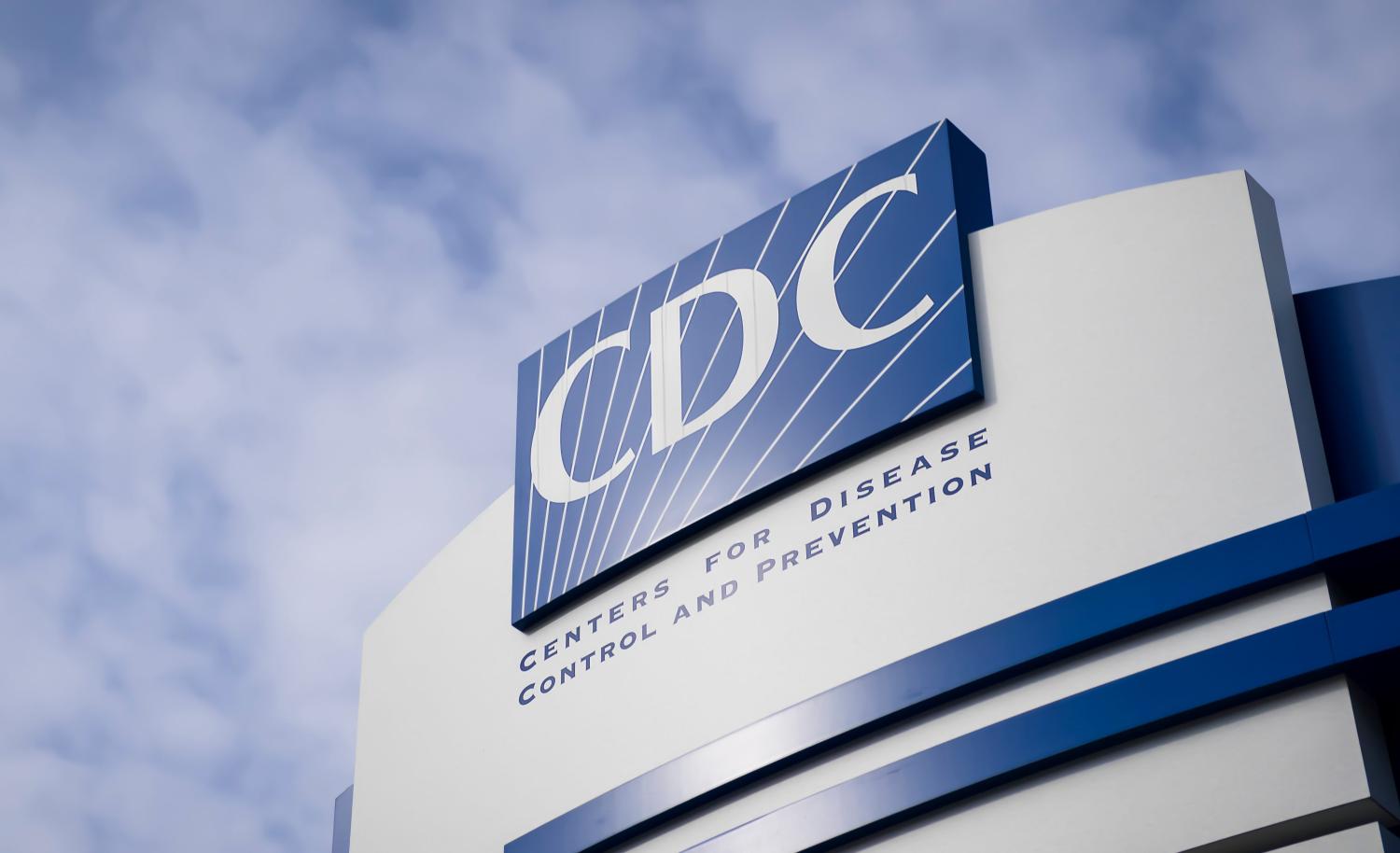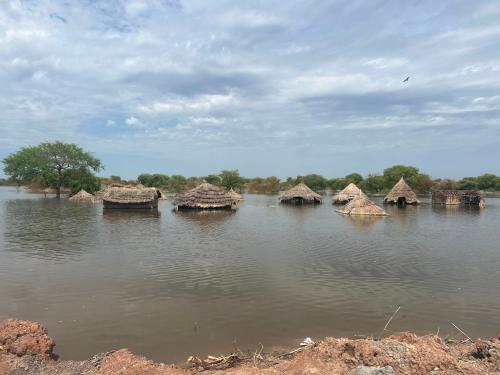On August 17, 2022, Centers for Disease Control and Prevention (CDC) Director Dr. Rochelle Walensky announced sweeping reforms to allow the CDC to publish data quicker and make public health guidelines clearer to improve the effectiveness of the agency. This is an important step to address many of the CDC’s shortcomings that came to light during the COVID-19 pandemic. As Dr. Walensky acknowledged, many of these problems arose from the calcified, bureaucratic nature of the CDC.
However, other reforms may be needed to address a different issue: the lack of a mechanism that would allow CDC expertise to be more directly integrated into the policy processes of other federal institutions. It is now clear that pandemics affect many aspects of life beyond individual health, from personal finance and housing to national security. Consequently, multiple federal agencies had to make decisions and promulgate regulations to respond to the pandemic. For example, the Department of Housing and Urban Development (HUD) published guidelines protecting certain tenants from eviction; the Department of Defense helped to develop, manufacture, and distribute COVID vaccines along with the Food and Drug Administration (FDA); the FDA approved COVID tests for use among the general population; and the Department of Homeland Security determined vaccination requirements and travel restrictions for international travelers. These are just a few examples of agencies other than the CDC that played a large role in the federal government’s response to the pandemic.
Some of the actions by these agencies have been criticized for making untimely, arbitrary decisions not grounded in the science of public health or epidemiology. To improve future decisionmaking in public health crises, we propose that Congress set up an interdepartmental coordination group that would include the CDC as well as the FDA, HUD, and the Departments of the Treasury, Education, Transportation, and Homeland Security, and the National Security Council in the White House. This would integrate the CDC’s expertise into the development of guidance and regulations related to pandemics and other public health emergencies. Such a body would establish a formal mode of communication between the scientists who research pandemics and transmissible disease and the institutions that make policy decisions. Though the coordinating group would not hold any inherent power in issuing regulations on its own, it would bring together technical expertise to facilitate coordinated problem solving across agencies and provide each agency with a direct line to the latest scientific research to help develop and justify pandemic-related policies.
This coordination group would also bring expertise on the operational capacities of other agencies into the CDC, promoting a better understanding of what scientific questions need to be answered to support the complex array of programs that make up the federal response to pandemics. The goal would be to make CDC’s scientific advice more responsive to the context in which it would be applied and thereby potentially also attenuate problems attributable to the CDC’s calcified bureaucracy. For example, this type of group might consider how the CDC’s understanding of how diseases are transmitted can better equip agencies such as HUD in designing guidance for limiting disease spread in public housing or how evidence on mask efficacy and viral transmissibility could best inform Department of Transportation (DOT) regulations on mass transit. While the CDC considers many of these issues already, the agency has been criticized for its long-term, academic approach. Creating a mechanism that facilitates communication, coordination, and alignment with other agencies to supply relevant data may reveal the need for the CDC to accelerate key research and reorient its work in a way that is more responsive to whole-government needs.
There is precedent for interdepartmental coordination of regulatory and programmatic efforts in the U.S., including the U.S. Interagency Council on Homelessness, composed of the Departments of Labor, Health and Human Services, Housing and Urban Development, and others. This group coordinates comprehensive policy to combat homelessness and helps set a comprehensive federal policy agenda, though the council itself does not issue rules or regulations. An analogous team of agencies collaborating to establish the best emergency policies during a pandemic might help to create a more timely and effective federal response to the next pandemic, more in line with countries that tackled COVID more successfully, such as South Korea and Taiwan.
This report outlines some of the issues that an interdepartmental coordination body may help to address before discussing what such an institution might look like.
Federal agencies’ responses to COVID-19
The role of the CDC
The statutory basis of the CDC’s isolation and quarantine authority is to “take measures to prevent the entry and spread of communicable diseases from foreign countries into the United States and between states,” as described in the Public Health Services Act.
During the COVID pandemic, this authority took many forms. The agency issued guidance on the use of masks as well as other public safety recommendations. However, the main function of the agency has been to perform research on COVID-19 itself, including its various health effects and transmissibility as well as how the virus manifested in certain areas—the day-to-day maps of COVID “hot-spots,” emerging international COVID outbreaks, which populations disproportionately suffered the virus’s adverse health effects, etc. Additionally, the CDC’s data helps to inform many decisions by policymakers, including those who issue rules and regulations in federal agencies.
As CDC Director Dr. Rochelle Walensky has stated, the CDC has typically opted to perform longer-term, academic-type research rather than nimbly reacting to emerging science. This caused problems for the CDC during the COVID pandemic, contributing to some of its public missteps. Dr. Walensky’s recent proposals for structural reforms at the CDC begin to address these issues. Specifically, the reforms create a new executive council to help the director set the agency’s overall strategy, reroute two science offices to report directly to the director, and beef up training for staff on how to more effectively respond to public health crises. The reforms also aim to de-emphasize publishing academic articles as the end-goal of CDC researchers and instead push the agency to consider its “public health impact.”
While the restructuring is a good starting point to reorient the CDC so it can more quickly respond to emerging public health threats and focus on the real-world impact of its actions, it will not fully address these problems. An interdepartmental coordination group would be a significant improvement on these existing plans.
The CDC’s authority was limited when the Supreme Court ruled in August 2021 that the agency could not issue an eviction moratorium for tenants living in areas of high COVID spread. In its ruling, the Court stated that it “strains credulity” to believe that the CDC’s authority under the Public Health Services Act to prevent the spread of communicable diseases grants the agency “the sweeping authority that it asserts.” Although the agency could still test the limits of its power in other ways, experts generally agree that this ruling indicates that the judiciary will uphold more narrow interpretations of the CDC’s role in the future, potentially preventing the agency from exercising regulatory authority in areas not expressly stated to fall under the agency’s purview as determined by Congress.
Other federal agencies’ responses to COVID-19
Because of this Supreme Court ruling, many emergency policy decisions in future pandemics will be the province of other federal agencies, even if they are motivated by public health concerns. Policies regarding evictions, for example, may be implemented by HUD, which promulgated a rule in 2021 to assert that in times of emergency, such as a pandemic, it can require landlords of HUD-subsidized housing to give 30 days’ notice to tenants before evicting them and provide tenants with information about federal emergency rental relief and the availability of emergency rental assistance in public housing.
This rule by HUD was created in October 2021, a few months after the CDC’s eviction moratorium was struck down. Increased collaboration between the CDC and these agencies would allow the federal government to create a more robust set of rules that could be implemented in the next pandemic, guided by CDC data. This type of policymaking that proactively mitigates threats and utilizes data to deploy a measured response is essential to combatting a future national emergency and providing more objective reasoning to garner public support for these actions.
The interagency coordination framework would also have been useful to apply to other agencies’ responses to the pandemic. The Department of Homeland Security issued rules throughout the pandemic restricting the entry of foreign travelers based on their vaccination status and maintained a list of countries on which travel restrictions were imposed. Many of these decisions, as well as some of the travel restrictions imposed by the Trump White House early in the pandemic, have been criticized as being arbitrary and not based on science. Had DHS begun issuing these rules jointly with the CDC at the onset of the pandemic, cited CDC data to back up its decisions, and worked with the CDC to establish objective criteria as to when a travel restriction would be implemented (e.g., based on the per capita COVID infection rate of a country which the CDC and the WHO had begun tracking), this may have protected the agency from some of the backlash it received.
An interdepartmental coordination group would work to establish better informed rules and regulations and ensure a more timely, objective, well-informed federal response.
Still another agency that could have benefitted from increased collaboration with the CDC was the FDA in its capacity to approve COVID test kits. At the start of the pandemic, the FDA had rules on the books that prevented state and commercial labs from developing their own COVID tests. This rule was not lifted until February 29, 2020, at which point the CDC had already tried and failed to create its own COVID diagnostic test, which it revealed was flawed on February 12. This left the U.S. far behind other countries that had tests readily available to help track the virus. Had an interdepartmental coordination group existed to bolster communication between the CDC and the FDA, the agencies could have worked more quickly to rescind the rule prohibiting private test development rather than operating in separate silos and rescinding the rule more than two weeks after the CDC realized its tests were flawed.
Collaborations between the CDC and agencies like the Department of Education (ED) may have addressed the issues that resulted in criticism that the CDC made rules and guidance solely based on science without considering social or economic impacts on children and their families. Specifically, the CDC was accused of publishing guidance on school closings that were deemed too cautious by some who claimed that they would have an adverse effect on learning and child well-being. This theory has been borne out in numerous studies that have shown the significance of these effects, with many schoolchildren struggling to catch up. Some have also argued that guidelines did not fully account for the effects virtual learning would have on children’s mental health, which deteriorated significantly for students learning remotely. Consultation with experts from the ED and the joint publication of guidance might have prompted the two agencies to weigh the full health and educational effects of the federal government’s school closing guidelines more proportionately.
One example of a successful coordination mechanism between agencies was Operation Warp Speed, which set up collaboration between HHS and the DOD to develop, manufacture, and distribute an effective COVID-19 vaccine. This collaboration delivered a viable vaccine within one year. The production of vaccines accelerated when Presidents Trump and Biden decided to initiate the Defense Production Act, which allowed the government to use Merck facilities to manufacture the Johnson & Johnson vaccine. DOD involvement in this process made the vaccine rollout faster and more effective.
Had the CDC been part of a formal coordination group with additional agencies, it could have more directly supplied data, in turn allowing these agencies to establish better informed rules and regulations to ensure a more timely, objective, well-informed response.
Current inter-agency coordination
Attempts to create a formal mode of communication between federal agencies during a pandemic have been made in the past. In 2016, then-President Obama’s National Security Council wrote a document that has often been called a “pandemic playbook.” This playbook outlined which federal officials are responsible for certain aspects of the response and a requirement that these officials communicate with each other to plan and coordinate the execution of a federal response. It also instructed federal agencies to convene on a regular basis, with the National Security Council serving as the “principal forum” for these meetings. The meetings would include multiple agencies within HHS as well as the Departments of Labor, Defense, Transportation, State, and members of the intelligence community, among other federal actors. The playbook specified that these meetings would cover decisions on everything from public communication to international coordination to deploying inventory of medical equipment to agency “exercises” to improve real-time decision-making.
It also detailed specific ways in which agencies could coordinate, such as improving the interoperability of their data and the implementation of the WHO’s framework for a risk assessment dashboard to formally monitor the state of epidemiological threats. Experts have said that the pandemic playbook, if used during COVID-19, would have secured a federal effort to provide masks and other personal protective equipment to hospitals two months before the Trump administration began to do so in March 2020.
The fatal flaw of this playbook, however, was its impermanence. The playbook was not legally binding, and the Trump administration did not follow its advice. When then-Vice President Mike Pence created the White House Coronavirus Task Force in January 2020 to coordinate a federal response, he was starting from scratch. A founding document with comprehensive, specific mechanisms of coordination among task force members did not exist, and the federal government mounted a shambolic pandemic response.
The congressional establishment of a pandemic response coordination framework would allow the U.S. to proactively monitor future emerging threats and remedy many inter-agency coordination challenges.
In 2021, President Biden established the new White House COVID-19 Response Team through Executive Order 13987. Though this did include some information on how the federal government would convene to mount a pandemic response, it is a temporary measure and does not fully outline how federal agencies could coordinate their respective authorities as the Obama administration’s pandemic playbook did. Even after the establishment of Biden’s Response Team, a couple months later, in March 2021, the Government Accountability Office published a report that outlined numerous ways in which the federal government failed to coordinate amongst itself to deploy an effective pandemic response, including a lack of a central pandemic database for all agencies and the public to use, a lack of coordination among agency staff on testing kits and vaccination efforts, a lack of a consistent timeframe among agencies on joint initiatives such as vaccine rollouts, and a lack of coordination regarding the role, funding, and supply allocation of the national stockpile.
To best combat the next pandemic, the congressional establishment of a formal pandemic response coordination framework, akin to that proposed in 2016 but permanent, would allow the U.S. to proactively monitor future emerging threats and remedy many of the inter-agency coordination challenges outlined above.
Establishing an interdepartmental coordination group
Our proposal
To fully address the myriad challenges of inter-agency coordination during a public health crisis, Congress should authorize an interdepartmental coordination group at the cabinet level that includes the CDC and other agencies. This group would be primarily composed of career officials from agencies within multiple departments of the federal government that would convene regularly in the event of a public health emergency, such as a future pandemic. The group would be tasked with sharing information to ensure that agency decisions are based on the latest science and expert knowledge. Such topics would include school closings and eviction moratoriums in areas of high spread; loan and tax extensions and exemptions for individuals and businesses; travel restrictions; and binding public health and quarantine measures for various places (schools, public spaces, work environments, transportation). To be able to effectively consider this broad range of issues, the group would have to include the CDC and the Departments of the Treasury, Education, Housing and Urban Development, Transportation, and Homeland Security, as well as the FDA and the National Security Council in the White House.
By including a range of departments, such a group would establish a formal mode of communication and bring the scientific expertise of the CDC to other agencies, and the policy-making expertise of other agencies to the CDC. While the CDC does currently have some economists, evaluators, and statisticians working for it, it does not have the wide range of experts necessary to tackle the diverse threats that emerge in a pandemic, and other agencies sometimes lack the scientific knowledge the CDC can provide to formulate the best regulations. Additionally, increased communication between these various experts is especially necessary given the reported breakdown of communications, particularly the breakdown of public health data communications, between the CDC and other agencies.
The proposed interdepartmental group would set the policy agenda on how to bolster the federal response against current and future pandemics by publishing a “federal strategic plan” roughly once each year. These agendas would include data summaries and discursive analyses that assess the state of the public health threat at hand, the stated positions of the federal government and long-term outlook, and how the regulations of member agencies fit into broader, comprehensive solutions proposed by the interdepartmental group. This is very similar to regular reports published every one-to-two years by the Interagency Council on Homelessness, as discussed below.
Numerous collaborations between the CDC and other agencies could be facilitated by this group. The CDC could have published rules with the Treasury Department specifying how to target funds from its Emergency Capital Investment Program, a 2021 initiative meant to augment efforts by financial institutions in low- and moderate-income communities to “support small businesses and consumers in their communities” during the pandemic. The CDC’s health data revealing the inequitable spread of the virus in certain vulnerable communities combined with the Treasury’s economic data could have better identified areas in most need of these funds. The CDC could work more closely with the National Security Council in the White House on biodefense, including how to best allocate money in the government-backed global pandemic defense fund, established in 2021 to provide resources for pandemic preparedness. The CDC could also work with DHS’s Office of Health Affairs, which houses the department’s National Biosurveillance Integration Center. This center coordinates public health surveillance efforts, creating “a comprehensive picture of ongoing incidents and outbreaks” domestically and abroad. The CDC could jointly publish rules with DHS to modernize and accelerate this type of monitoring based on data from its Epidemic Intelligence Service, a fellowship program meant to investigate and deploy emergency response efforts to emerging international pandemic threats, with researchers in the field.
Congress may also consider requiring the agencies in the group to share certain data and information on the state of the public health threat, such as comprehensive reports by the CDC on their work on emerging epidemics, information by HUD on the state of evictions, any evaluations the Department of Homeland Security may conduct on the efficacy of their travel restrictions, or any other information relevant to the policy examples listed above. This could help prevent efforts by a particular agency or an administration as a whole to undermine this type of cross-agency collaboration. While individual administrations may set up forums for interagency collaboration, getting authorization from Congress would ensure the longevity of this interagency group, continuously operating from one administration to the next.
We have the means to tackle the next pandemic, but it requires a more agile federal government with broad-reaching authority to coordinate and execute a comprehensive plan.
Lastly, an interdepartmental coordination group would be better equipped to monitor emerging health threats. In the last year we have seen the outbreak of monkeypox and the threat of a polio re-emergence. Even more recently, scientists said a bird flu outbreak starting in winter 2023 has the potential to jump to other animals, including humans, with widespread calls for more proactive surveillance of the disease. While the CDC’s data on these types of emerging health threats have been invaluable, collaboration with other Departments, including the Department of Homeland Security, would allow the government to properly assess the national security threat posed by new outbreaks. This type of real-time monitoring is essential to gain insight quickly and better prepare any future federal action that may be necessary to combat disease.
Existing collaborations
Ongoing collaboration between departments to establish rules is nothing new. The U.S. Interagency Council on Homelessness, for example, coordinates homelessness policy among 19 federal agencies. The council was authorized by Congress in the Homeless Assistance Act of 1987, which allowed it to exist as an “independent establishment” in the executive branch. With the goal of using evidence-based practices to increase housing accessibility, decriminalize homelessness, and achieve racial equity in housing, the council publishes “federal strategic plans” every few years to set their agenda. These plans include summaries on the current state of homelessness with supporting data, updates on the regulatory solutions that have been implemented, and summaries of how the coordinated, multi-agency response will commence in the future. The council issues a report semi-annually.
The Interagency Council on Homelessness is composed of an executive director, a national initiatives team to coordinate with state and local officials, a policy team to work with the White House and federal agencies, a legislative affairs team to coordinate effective legislation in Congress, and a communications team. A similar structure would be appropriate for an analogous pandemic coordinating group.
The CDC itself is already a member of interagency groups on issues apart from pandemics. The CDC already collaborates with the Departments of Justice, Energy, Homeland Security, Defense, and the Environmental Protection Agency to combat bioterrorism. Together, these agencies have created a joint inspection program and improved information sharing related to bioterrorism, increasing their collective efficiency.
Conclusion
In today’s interconnected world, a new disease can spread rapidly and touch every aspect of daily life. We cannot afford to make the same mistakes we made with COVID with a more deleterious pathogen in the future. While Dr. Walensky’s recent reforms partially address the calcified bureaucracy that has plagued the CDC, it does not solve the problem of CDC’s experts being relatively siloed from other agencies or its inability to push necessary mandates, thereby leaving it to conduct research that may not always have practical policy implications. Indeed, the GAO’s 2021 report evaluating the federal pandemic response found a lack of coordination and information-sharing between agencies led to inconsistent decisionmaking. The office subsequently recommended that agencies “establish compatible policies, procedures, and other means to operate across agency boundaries.”
An interdepartmental coordination group would help CDC reorient and become more pragmatic in how it uses its research, and, in turn, would allow other federal agencies to act more quickly based on the latest science. This new group would be tasked with coordinating joint regulations on everything from binding public health measures and school closures to eviction moratoriums and emergency financial mechanisms for both individuals and businesses.
Increased collaboration among agencies could begin immediately. However, to create this interdepartmental coordination group, give it teeth, and allow it to operate as an independent entity within the executive branch, Congress would have to authorize its existence and allocate funding. Of course, while an interdepartmental coordination group will allow federal agencies to make coordinated decisions, it will not inherently grow the power of the federal government. To do that, additional legislation would likely have to be passed, such as an addition to the Public Health Service Act to give the government greater power in times of emergency.
We have the means to tackle the next pandemic, but it requires a more agile federal government with broad-reaching authority to coordinate and execute a comprehensive plan. An interdepartmental coordination group would not only foster a more responsive, flexible environment in each of its agencies, but it would also allow the federal government to quickly promulgate rules to mitigate the effect of a public health crisis on multiple aspects of American life and create a safer public health environment.
The Brookings Institution is financed through the support of a diverse array of foundations, corporations, governments, individuals, as well as an endowment. A list of donors can be found in our annual reports published online here. The findings, interpretations, and conclusions in this report are solely those of its author(s) and are not influenced by any donation.
The Brookings Institution is committed to quality, independence, and impact.
We are supported by a diverse array of funders. In line with our values and policies, each Brookings publication represents the sole views of its author(s).









